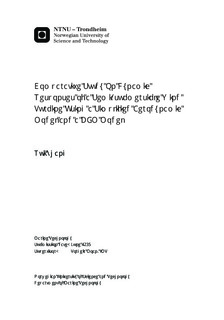| dc.description.abstract | Due to the high potential of offshore wind energy, a lot of research work is being done around the world on offshore wind turbines. Currently mainly two types of model are used in Marine Technology Department of NTNU to estimate wind effect on the turbine. A simplified method with computation tool TDHmill, and a refined method with computation tool Aerodyn. No detailed analysis has yet been performed to show the difference between these two methods on a semi-submersible floating offshore wind turbine.In this thesis, the comparison between these models is performed. Two models are set up in the Simo-Riflex dynamic response calculation code with exactly the same floater and mooring system. Wind turbines in the two models are set up with the two different computation tools. Environmental conditions are chosen based on the wind turbine specification and wave statistics in Norwegian Sea. Wind input files in the two models are transformed from one origin and thus are exactly the same.The models are checked to show that they are similar with regard to all features except wind turbine models, and the two models are reasonable in engineering reality.The results are analyzed based on the response time series, mean value and standard deviation and response spectrum. It is shown that mean values of thrust force, floater motion and mooring line tension are similar in the two models but TDHmill model shows a slightly larger response. Generally TDHmill model shows less variation than Aerodyn model, with significant difference. In extreme conditions, conclusions can be drawn that TDHmill gives poor estimation of the wind effect, the mooring line tension response is slightly smaller in TDHmill model, and wave effect is more important than wind effect. Computation time for TDHmill is much shorter than for Aerodyn model.It can be concluded that TDHmill can be used in any environment in turbine working conditions, when mean value is the value of interest and accuracy requirement is not very strict. And TDHmill cannot be used in extreme condition analysis, or when extreme value or oscillation range is the value of interest. Neither can it be used when accuracy requirement is strict. | nb_NO |

